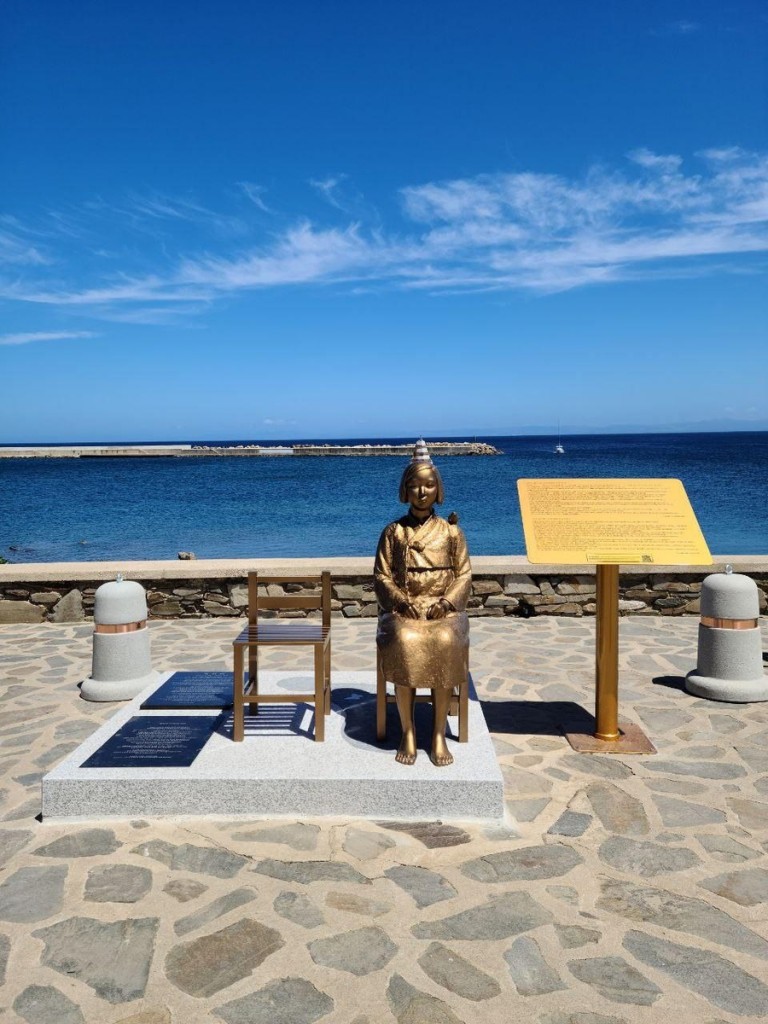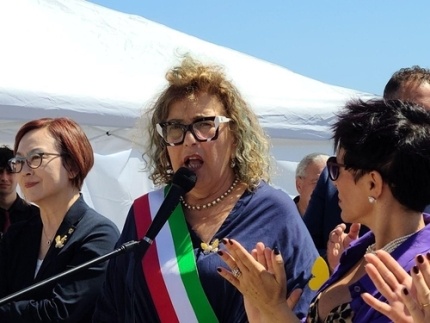
With Comfort Women statues around the world threatened with demolition due to pressure from the Japanese government, this one was no exception, with protests from the Japanese side. (Image courtesy of The Korean Council for Justice and Remembrance for the Issues of Military Sexual Slavery by Japan)
SEOUL & ROMA, Jun. 23 (Korea Bizwire) – A “Statue of Peace” commemorating victims of wartime sexual slavery was unveiled on the Mediterranean coast of Sardinia on June 22, immediately igniting a diplomatic dispute.
The statue, erected in the town of Stintino, faced challenges from its inception, reflecting the ongoing tensions surrounding these memorials worldwide amid pressure from the Japanese government for their removal.
According to the Korean organization that spearheaded the statue’s installation, the unveiling ceremony was attended by prominent Sardinian politicians and representatives from women’s and civic organizations.
Rita Vallebella, the mayor of Stintino, and Lee Na-young, chairperson of the Korean Council for Justice and Remembrance for the Issues of Military Sexual Slavery by Japan, delivered speeches, followed by a local choir’s rendition of the Korean folk song “Arirang.”
The statue, situated on public land near the beach—a popular tourist area just 200 meters from Stintino’s city hall—aims to educate a wide audience about the history it represents.

Mayor Rita Vallebella, the mayor of Stintino, at the unveiling of the “Statue of Peace” (Image courtesy of The Korean Council for Justice and Remembrance for the Issues of Military Sexual Slavery by Japan)
However, controversy quickly emerged over Vallebella’s statements. Japan’s Kyodo News reported that Vallebella had agreed to modify the statue’s inscription, acknowledging its bias and expressing intent to include both Korean and Japanese perspectives.
Lee contradicted this report, stating that Vallebella denied mentioning any plans to alter the inscription when they met on the day of the unveiling.
The statue’s accompanying plaque, titled “Testimony of Memory,” details the historical context of the “comfort women” system implemented by the Japanese military during World War II and expresses strong disapproval of the Japanese government’s efforts to remove such statues globally.
This statue is the 14th of its kind installed outside Korea, amidst an ongoing campaign by Japanese officials to remove similar memorials worldwide. In Berlin, where Europe’s first “comfort women” statue was erected, local authorities have announced plans for its removal by September 28, citing failed negotiations over modifying its inscription.
The Stintino statue’s future remains uncertain, with potential for continued diplomatic pressure and public debate. Lee emphasized the importance of ongoing efforts to protect the statue, anticipating challenges ahead.
Ashley Song (ashley@koreabizwire.com)






